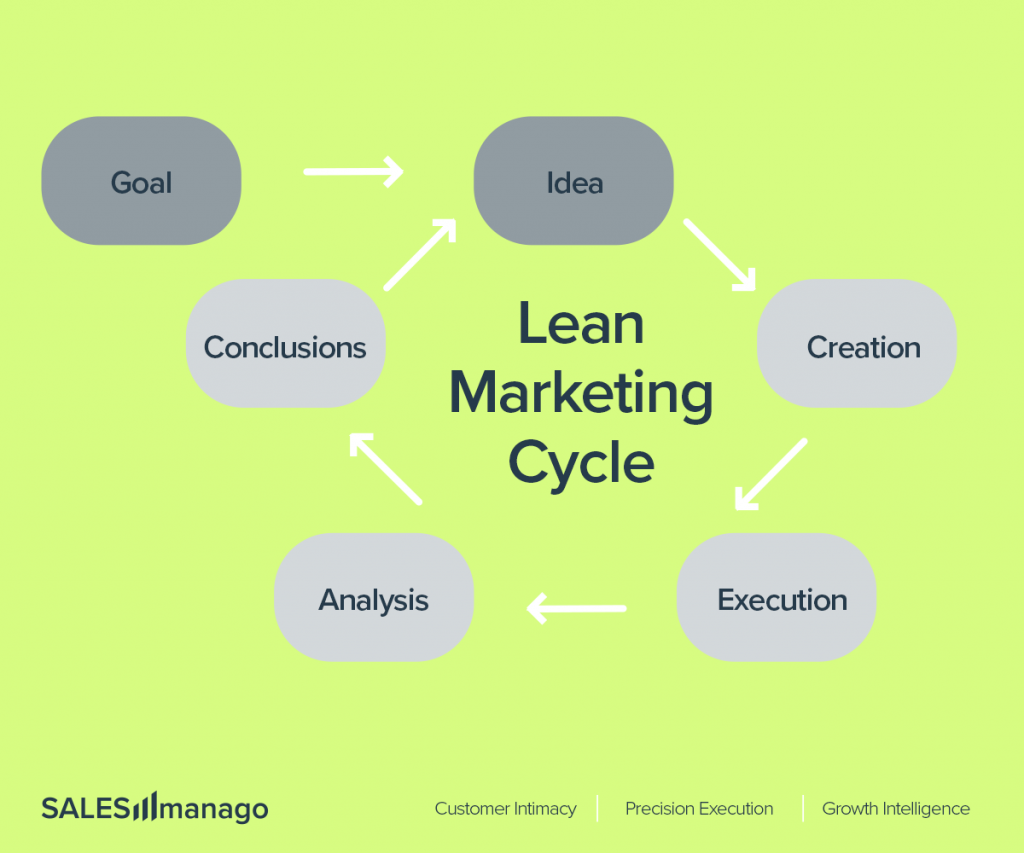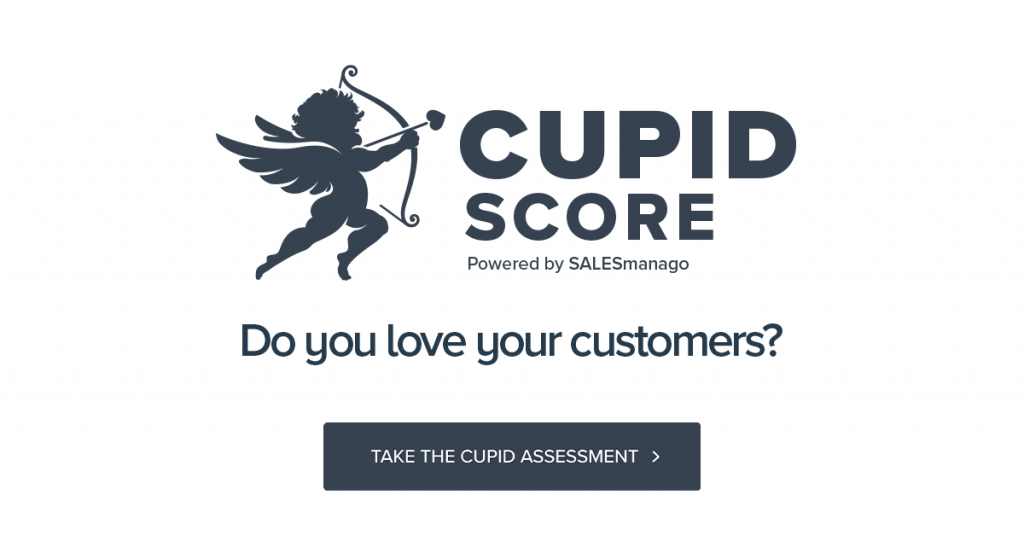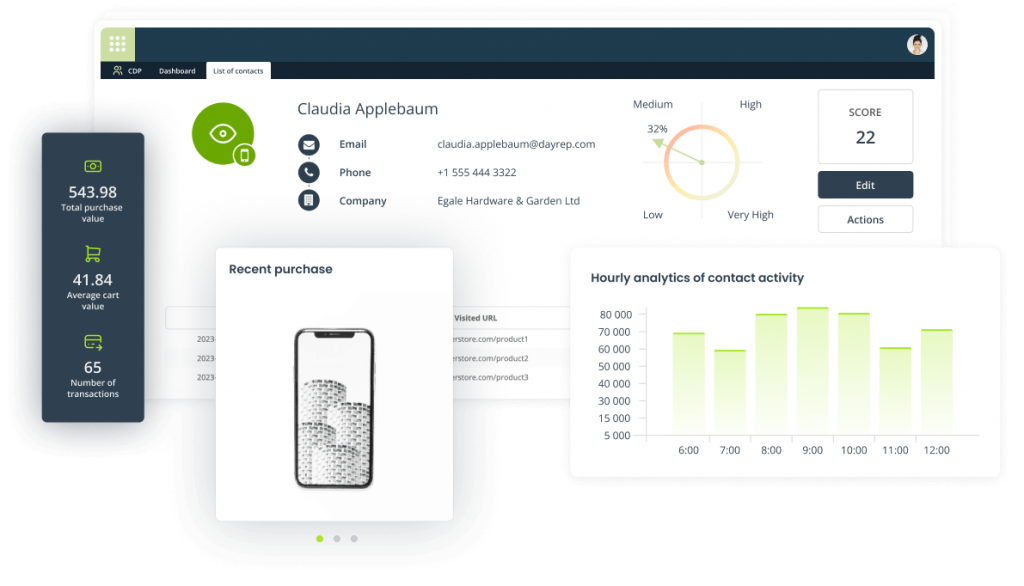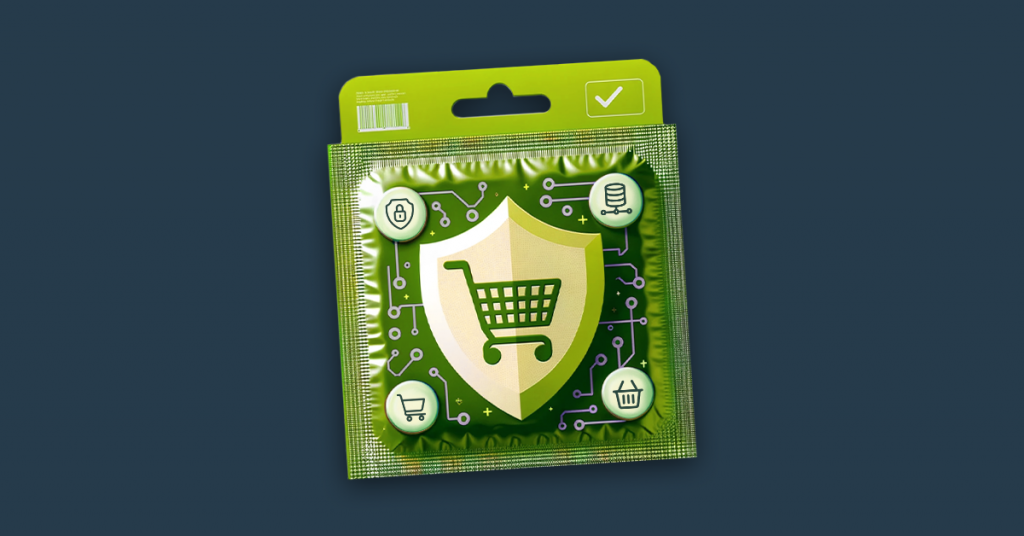
First, there was Lean Manufacturing, then Lean Management. This constituted the common understanding of the term Lean, which means achieving goals without costly waste or surpluses—of time, resources, or effort. Lean Marketing is about all that, plus it draws from the Agile project management style. Lean Marketing is also much easier to do when you have a customer data platform (CDP).
Where did it come from?
The term Lean Marketing was popularized by Eric Ries. Although the lean concept is popular in the science of management, thus far it has been associated mainly with the context of lean manufacturing, which boils down to reducing waste in the production process and keeping stock at the minimum possible level, or lean management, where it means “shortening” decision-making processes by, for example, changing the organization from a lean form (multi-level, bureaucratic) to flat (with a small number of levels and a small distance between the management and the crew).
Lean or agile?
You may also hear of lean marketing as a startup term, or maybe you’re familiar with Agile Marketing, which takes cues from the agile processes used by software developers and offers valuable lessons for CMOs.
Lean Marketing closely resembles the Agile style of project management, with its focus on a single task at once and its emphasis on iterations.
As eCommerce must, at some stage, meet the concept of Agile software project management, its principles should be easily understandable and possible to adapt and absorb.
What is Lean Marketing?
According to the original concept, lean marketing means reaching the customer at the lowest possible cost without involving “expensive” media (i.e., through modern channels). In the simplest terms, lean marketing is an analysis of what the recipient truly cares about and cleans the entire communication process, removing waste of time and money and eliminating activities that do not bring value to the target customer.
Known as a startup term,Lean Marketing works well in most small and medium-sized enterprises, as practice shows. Lean Marketing allows you to spend limited marketing expenditure on activities that increase the effectiveness of acquiring potential customers.
The difference between traditional and lean marketing
In traditional marketing, the final effect of realizing the marketing plan is determined beforehand, and teams cannot adjust and adapt throughout the creation process. Marketers often repeat certain activities without regularly measuring their effects. This means a lack of improvement along the way, as well as a lack of adaptivity to changing levels of customer engagement. This results in the customers ultimately being pushed away due to not precisely targeting them with personalized activities.
When examining the Agile project management roots of Lean Marketing, traditional marketing closely resembles Agile’s chief opposition – Waterfall.
Unlike in Waterfall, where the final effect is determined upfront, Lean Marketing:
- Prioritizes based on reality to deliver marketing actions that meet customer expectations.
- Breaks big, long-term goals into mini-projects. Focuses on small wins every few weeks and iterates toward an optimal solution.
- Demands that the time between concept and delivery be counted in weeks instead of months.
- Assumes frequent status meetings focused on what is working, what is done, and what is keeping a team from doing more.
- Makes quick corrections possible if things change or people go off course.
Lean marketing cycle
Planning an effective Lean Marketing campaign first requires setting a specific organizational goal. It is best to check it with the SMART rule to determine whether the goal has been formulated in a way that will allow for its effective implementation. Then, in the idea phase, try one of the methods for group idea generation, such as brainstorming. Next, move on to the iterative process of creating, testing, and improving the adopted solutions.

How to Lean Marketing?
Your actions start more or less the same as in classic marketing activities. It is necessary to segment the market and define the target group for your product. To lay a solid foundation for further activities, you should include the following factors:
- Psychographic aspects – purchasing patterns, fashions, associations with the product
- Geographical context – a place of residence, the population in a given area
- Social and demographic factors – gender, income, education
- Budget limitations – financial limits that were defined for the campaign
The difference shows when you start planning subsequent actions based on these criteria. To plan them in a lean way, you should remember the following key lean assumptions:
- Deliver faster in less time by breaking large, long-term goals into small tasks; deliver small pieces every few weeks, and iterate toward an optimal solution. There are two meanings of fast. First, when limiting your work in progress, you start working on smaller batches, and, because of that, you can see the fruits of your work faster. With that, you’ll be able to test and launch them faster (if we are talking in the context of a marketing campaign). The second aspect is fast iterations. By iterating multiple times, you can dramatically improve every cycle compared to the previous one.
- Conduct frequent status meetings to discuss what is working, what is done, and what is keeping your team from doing more. You can start with daily stand-up meetings—this is a short (up to 15 minutes) gathering of the team that is held every day to sync what is happening between the team members and keep everyone on the same page. Every member must share what they have done the day before, what they will do this day, and what challenges they have faced or think they will face. Daily stand-ups are an essential part of the Lean Marketing machine. Besides helping your team remain in sync, these meetings also help you find and resolve your teammates’ challenges before they turn into problems.
- Stay focused. Lean has no place for multitasking. Research shows that multitasking generally reduces productivity. Since the goal of Lean Marketing is continual improvement, team members cannot work on multiple things at once.
- Do not rely blindly on plans. Lean Marketing is based on flexibility and readiness to adapt to changing circumstances and resources. In the context of Eric Ries’s methodology, this is called “pivoting.” The decision of whether you should pivot or preserve your current state must be backed up by data and not be the result of impulsive urges.
5 key elements of Lean Marketing strategy
We can safely call it a strategy because switching to a Lean Marketing process is a strategic move that will completely change the way your team works. Such a strategy should include five key elements. Knowing these elements at the beginning will allow you to apply Lean Marketing more easily to the current flow of your process. Without any frustrating changes, Lean advises you to start with what you do now, work with what you have, and gradually build upon it.
- Personas: Make a precise identification of the types of customers you will be interacting with; it will save you time that would otherwise be lost on reaching uninterested consumers.
- Marketing process: Remember to regularly analyze the results of already implemented solutions and the need to constantly improve them.
- Measurements: Always use at least one application or website that allows you to conduct analytics and measure behaviors and interactions with your customers.
- Testing and measurement tools: Use technological solutions that automate your marketing processes and check the quality of the content on the website, like A/B testing.
- Check your progress regularly: Remember, your goal should not be to create the perfect solution right away but to enter the path of small, regular improvements that will allow you to achieve perfection in less time than you think. Lean marketing is always iterative. Build small ideas, take them to the market, measure results, learn, and repeat using the lessons learned.
The most often reported benefits of Lean Marketing strategy
According to the CMO’s Agenda research, 67% of CMOs using Lean Marketing methods report increased profits and revenues. Lean Marketing does this primarily by:
- Keeping the organization customer-focused
- Improving speed to market
- Making teams more productive
- Enhancing prioritization
- Delivering better, more relevant end products
- Increasing throughput/velocity of work delivered
… and how does it all relate to Customer Intimacy and CDP?
First, remember that to lay a solid foundation for further Lean Marketing activities, you should include the following factors:
- Psychographic
- Geographical
- Social
- Budget
Second, some of the key elements of the Lean Marketing strategy are as follows:
- Personas
- Measurements
- Testing and measurement tools
These are either customer data or marketing tools. Furthermore, modern CDP is more than able to provide you with the means to create the following:
- Superb segmentation, called Hyper Segmentation
- Hyper-personalized segments, which are much more effective than personas
- Cutting-edge measurement and testing tools
Using Next-Gen CDP, you are able to transcend the ordinary level of customer knowledge and reach Customer Intimacy, which will effectively bolster your Lean Marketing strategy. How exactly can you intertwine a CDP with Lean Marketing strategy? This will be discussed in our next article.





 Follow
Follow

![[New Feature] Shine the light on your hidden visitors with Spotlight](https://blog.salesmanago.com/wp-content/uploads/2024/04/1-9.png)


![[New Feature] Unlock Deep Behavioral Personalization with Product Collections](https://blog.salesmanago.com/wp-content/uploads/2024/03/1-3.png)



![[New Feature] Shine the light on your hidden visitors with Spotlight](https://blog.salesmanago.com/wp-content/uploads/2024/04/1-9-1024x536.png)








